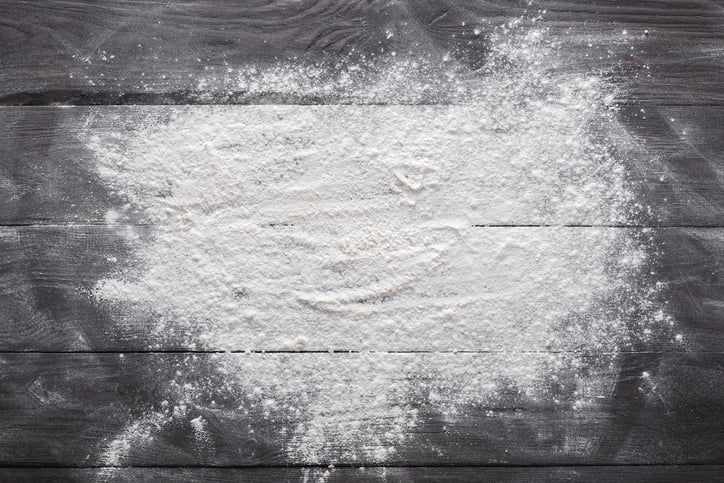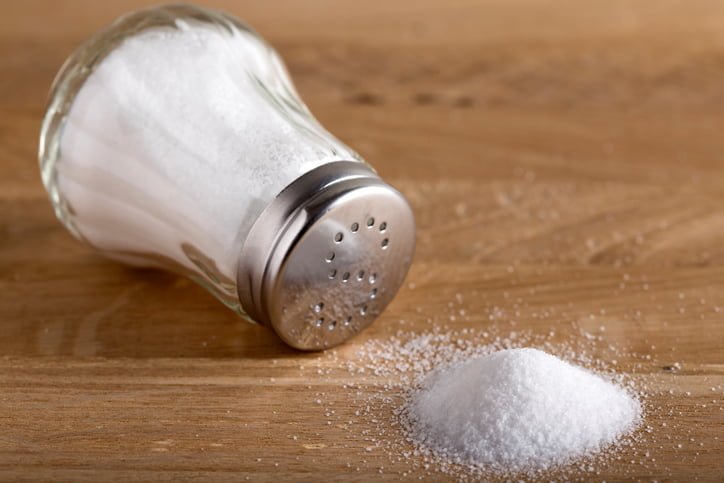I grew up learning to love the science of food while watching my parents cook. My mom is known for her chocolate chip cookie recipe. When we made this recipe together, my first task was always to start measuring out all the ingredients. Her recipe is fairly basic and has a few different powdered ingredients. I’d try and get everything measured out as quickly as possible so she was not waiting on any ingredients to add. Some of the ingredients like baking soda or salt turned into a “hockey puck” and were very difficult to break apart and measure. This helped peak my interest in learning about the science of food, but it wasn’t until later that I began to learn about anti-caking agents.
What are they (anti-caking agents) doing in my food?
Without anti-caking agents, my cookie ingredients (sugar, flour, baking powder etc.) would, over time, become solid blocks of chalk. These dry ingredients slowly suck humidity out of the air as time passes. That water allows the particles to bind with one another. This also leads to lower product quality as the ingredients oxidize and lose their ability to flow when being poured. Anti-caking agents solve this conundrum by either coating the particles themselves to shield them or absorbing moisture before the powder does.
Anti-caking agents are added in very small amounts to powders and other food products like table salt, spices, milk powder, flour, sugar and many more pantry friendly items. While most commonly used in flour, anti-caking agents have other applications too. For example, anticaking agents are popularly used in non-food items like “road salt, fertilizers, cosmetics, synthetic detergents, and in other similar applications.” They allow a wide range of products to freely flow when they’re being used. They often appear in products that are more susceptible to clumping such sugar or flour. These types of staple ingredients often crystallize resulting in solid blocks that do not pour evenly and are harder to mix. This limits their use in baking and cooking applications.
Let’s compare brown sugar and powdered sugar. Brown sugar, with its dark brown color and clumpy texture, contains molasses and high levels of humidity. Powdered sugar on the other hand, with very fine, dry particles, offers a completely different functionality as an ingredient. The difference is the addition of an anti-caking agent like cornstarch or tricalcium phosphate to the powdered sugar. These are added typically at less than 5 percent of the total weight and have tremendous impacts on the functionality of the ingredient.
What foods benefit from them?
The most common anti-caking agent is salt. When you pour out salt from a box, you expect it to flow freely, often thanks to sodium aluminosilicate. Could you imagine having to pick apart salt from a block every time you needed salt to cook or wanted to add flavor to a bag of popcorn? Salt crystals are coated with an anti-caking agent that keeps the particles separate from one another. If you’ve ever eaten at a restaurant where they put rice in their salt shakers, they are using a very practical form of an anti-caking agent.
In addition to simple powders, there are many different examples of how anti-caking agents are used to make ingredients flow evenly. They are used in all sorts of products you might not think would clump up while waiting in storage to be used. Sodium dioxide is an anti-caking agent used in powdered eggs and even for filtering beer. In some spices, calcium silicate is used to limit the mobility of oils and absorb water. For mannitol (a sugar replacer), it is used to dust chewing gum and other products, keeping them from sticking together. Cellulose, a common addition to parmesan cheese, works similarly by keeping the cheese from turning back into a block. Stearic acid, a common fatty acid found in cow’s milk fat, can be used to make edible coatings that prevent interaction with water and other food components and help extend shelf life.
Food manufacturers will often add anti-caking agents at some point during the production process to optimize manufacturing. Reducing clumping and moisture-absorption means lower costs for sugar, flour and other staple ingredients in your pantry.
Most importantly, are they safe?
Yes. The bottom-line is that the U.S. Food and Drug Administration (FDA) confirms the safe use of the anti-caking agents used in food and beverages. They must pass a rigorous evaluation in order to be used. This evaluation requires a dossier containing the scientific evaluation of the safety of the ingredient. Once the FDA reviews the data, an ingredient can be deemed safe and given a status known as “Generally Recognized as Safe,” or “GRAS” certification, which means it is certified and managed by the FDA.
After learning about the components of anti-caking agents, I have developed a deeper appreciation for the science and technology that goes into my ingredients and how they aid my cooking at home. Like many people, I do not have much time to cook and bake, but when I do, it is nice to have food ingredients that function well and aid me in creating the perfect batch of chocolate chip cookies. This will be of even higher importance as the holidays approach and we share our favorite treats and desserts with our loved ones. I look forward to going home and making some of my mom’s cookies with her recipes. Instead of wasting time breaking up a chunk of baking soda, I will focus on enjoying more time with her.
Jacob Farr and Eddie Orzechowski contributed to this post.
